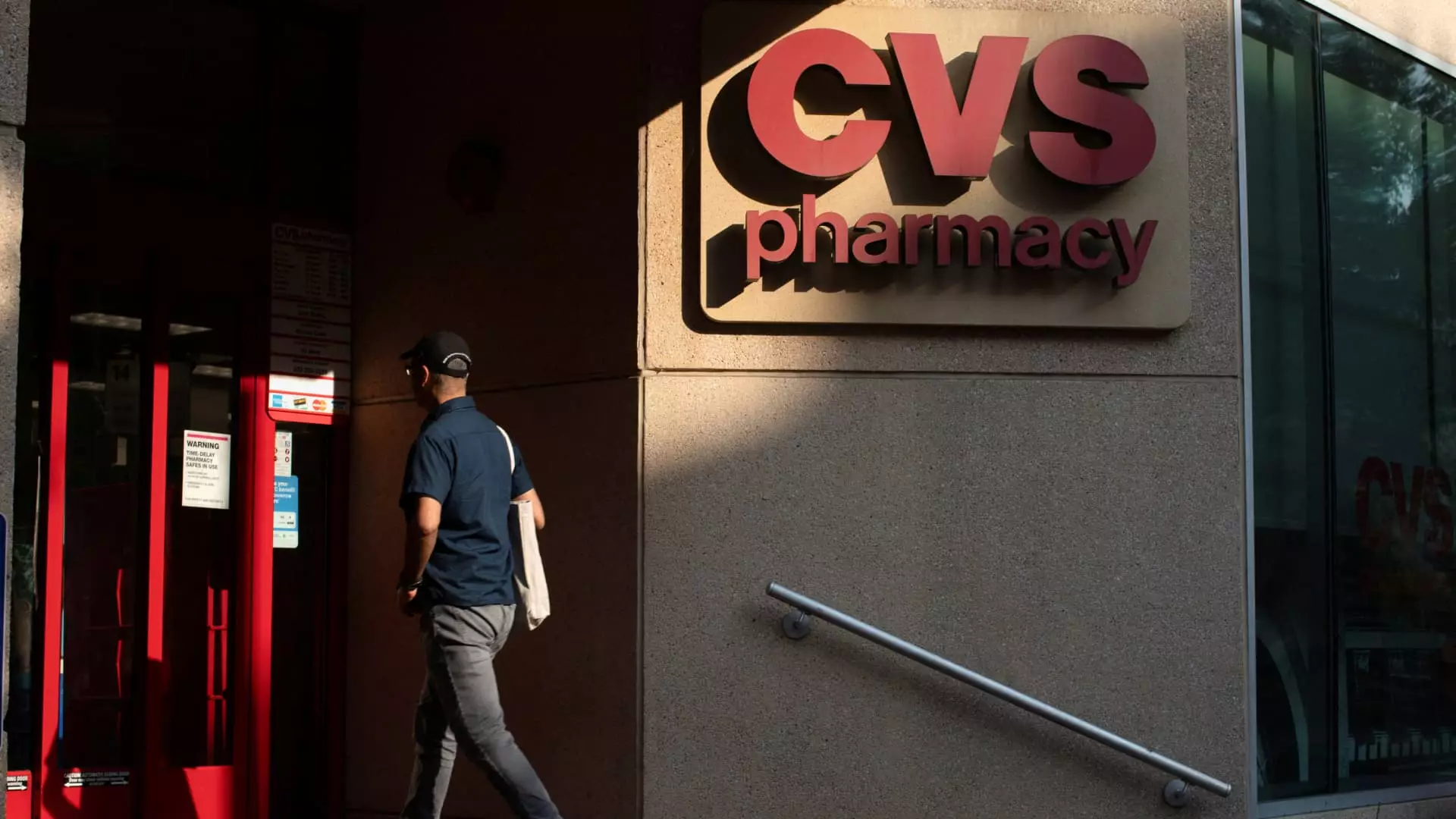CVS Health’s latest earnings report signals more than just a fleeting moment of success; it heralds a significant shift in the healthcare retail landscape. Once criticized for sluggish growth and operational inefficiencies, CVS has demonstrated that strategic flexibility and technological investments can propel a giant forward even in turbulent times. The company’s ability to post better-than-expected earnings and lift its profit outlook underscores a determined effort not just to survive, but to assert dominance amid a highly competitive and often unpredictable healthcare marketplace.
The impressive second-quarter figures are a testament to CVS’s resilient business model that emphasizes innovation, strategic expansion, and cost efficiency. An adjusted earnings per share of $1.81 starkly beat analyst predictions, while revenue figures surged past expectations, reinforcing the notion that CVS’s diversified portfolio is steering the company toward a stronger future. This isn’t just a typical corporate recovery; it’s a calculated assertion that CVS intends to challenge its competitors and redefine its role beyond the traditional pharmacy retail paradigm.
The key to this resurgence lies in the company’s strategic focus on its core strengths—retail pharmacy operations and insurance services—while tweaking and refining its business models. The strong performance of its retail pharmacy division, driven by technological improvements and operational efficiencies, highlights CVS’s proactive approach to market challenges. Meanwhile, its insurance segment, despite a few hurdles, managed to deliver growth and maintain profitability, revealing a careful balancing act that centers on long-term resilience rather than short-term gains.
Strategic Initiatives and the Power of Technology
CVS’s recent success cannot be separated from its aggressive investments in technology and operational reforms. The company’s emphasis on streamlining pharmacy operations, reducing costs, and deploying an innovative prescription drug pricing model signals a substantial shift towards consumer-centric and payor-friendly practices. By leveraging data and automation, CVS has sharpened its competitive edge, offering faster, more reliable service while lowering operational costs.
Furthermore, CVS’s commitment to strategic store placement and geographical expansion—particularly in underrepresented markets like the Pacific Northwest—illustrates an understanding that growth depends not only on scaling but on intelligence-based expansion. Instead of chasing every opportunity blindly, CVS is refining its footprint to maximize profitability and minimize risk, echoing a center-right approach that favors measured, strategic development over reckless expansion.
The company’s move to pursue $2 billion in cost cuts over the coming years—still in progress—demonstrates an acknowledgment that profitability hinges on efficiency. This focus on trimming excess, closing underperforming stores, and optimizing operations resonates with a pragmatic mindset that values sustainability and shareholder returns over short-sighted growth strategies. It’s a reminder that tough decisions are essential in maintaining a competitive edge and restoring faith among investors.
Challenges Within the Insurance Sphere
Yet, not all is rosy for CVS. Its insurance division, Aetna, continues to grapple with rising medical costs, notably in Medicare Advantage plans. While the segment reported revenue growth surpassing expectations, its medical benefit ratio edged upward, signaling mounting pressure to control expenses. The $471 million charge related to future coverage liabilities underscores the ongoing difficulty of managing unpredictable healthcare costs—an issue that remains a significant obstacle for every insurer in the landscape.
This segment’s struggles highlight the broader challenges facing healthcare providers and insurers: balancing quality care with cost control in an environment where demand is surging and hospitals are re-admitting patients at alarming rates. Although CVS’s insurance arm remains profitable, its margins are under threat from industry-wide headwinds—not to mention the persistent political and regulatory uncertainties that keep insurance margins fragile.
In a political climate increasingly hostile to health industry profits, CVS’s ability to maintain profitability while navigating mounting costs demonstrates a pragmatic adaptability. It consciously steers through the chaos, knowing that short-term setbacks in insurance do not define its long-term trajectory.
The Road Ahead: Pragmatism over Promise
CVS’s latest report signals a company that, despite its challenges, refuses to be complacent. Its leadership’s unwavering focus on operational efficiency, technological innovation, and targeted expansion reveals a clear, center-right approach—prioritizing sustainable growth and shareholder value while remaining vigilant against the unpredictable nature of healthcare costs and regulatory policies.
This is a company that clearly understands the importance of a robust, diversified portfolio and is not afraid to make tough decisions, including store closures and cost cuts, to secure its future. The boldness of its outlook and the strategic recalibration of its business model suggest CVS is intent on not just surviving but thriving—despite the industry’s turbulence and political headwinds that threaten to hinder more naive or overly optimistic competitors.
In essence, CVS’s latest performance reflects a sophisticated, pragmatic approach rooted in efficiency, innovation, and strategic evaluation. It signals to the industry that longevity and success depend on smart execution, disciplined cost management, and a realistic assessment of market risks—values that resonate strongly within a center-right liberal framework that emphasizes free enterprise, strategic thinking, and resilience.

